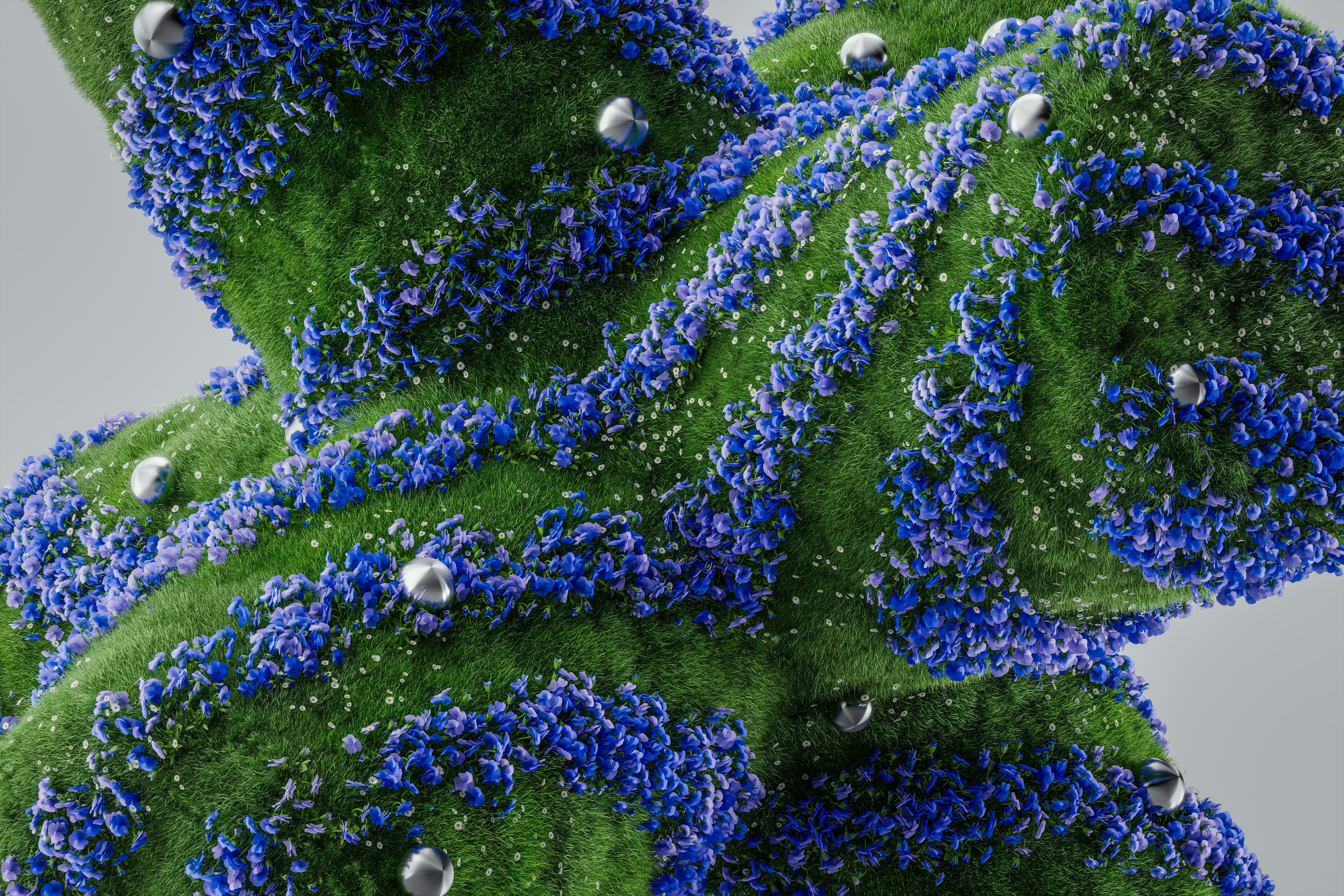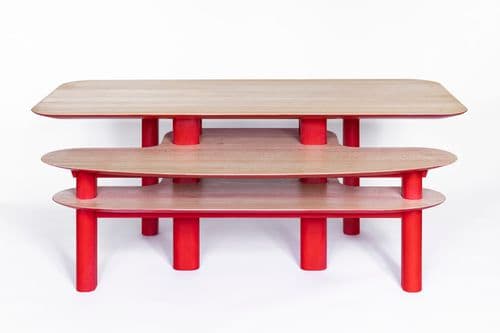In an era of climate constraints and material scarcity, design education is undergoing a profound shift. Around the world, forward-thinking schools of product design and architecture are redefining how we teach and practice design for a sustainable future. These institutions recognize that tomorrow’s designers must be systems thinkers and material innovators—equipped not just with technical skills, but with frameworks for planetary responsibility. Curricula are blending design with material science, life-cycle analysis, and ecological intelligence, reflecting a new ethos: great design must work with the planet’s limits, not against them.
This evolution is visible in studio-based learning that explores circularity and bio-based materials, cross-disciplinary collaboration bridging design, engineering, biology, and social science, and open labs or material libraries where students prototype regenerative solutions. Many of these schools serve as public platforms—publishing speculative futures, exhibiting sustainable prototypes, even hosting podcasts—to disseminate new ideas. The design studio remains a potent engine for change: a “material playground” where cellulose, mycelium, bamboo, and bytes converge into sustainable innovation. The following 30 institutions (listed alphabetically) are leading this educational revolution, cultivating mindsets for a post-linear, materials-conscious world.
1. Aalto University – School of Arts, Design and Architecture (Helsinki, Finland)
Located in Finland, Aalto’s design school infuses Nordic sustainability values into its teaching. Students learn to merge design, technology, and nature, often through project-based courses on circular economy and biomaterials. The university’s Creative Sustainability program unites design, architecture, and business students around real-world ecological challenges. With initiatives like the Nordic Biomaterials Studio and a campus Design Factory, Aalto provides hands-on experience in crafting products and systems from bio-based and recyclable materials.
Key Focus Areas: Circular product design, bio-based materials research.
Signature Studio / Lab / Output: CHEMARTS (Aalto’s collaboration exploring cellulose and biodesign) and the Circular Economy Design labs that prototype new uses for “waste” resources.
Recognition: Internationally regarded for its transdisciplinary innovation (Aalto ranks among Europe’s top design universities) and known for pioneering a “Nordic sustainable design” approach influencing industries.
What Tocco loves: “Turns the studio into a living lab—where Finnish wood, fungi, and student imaginations grow solutions together.”
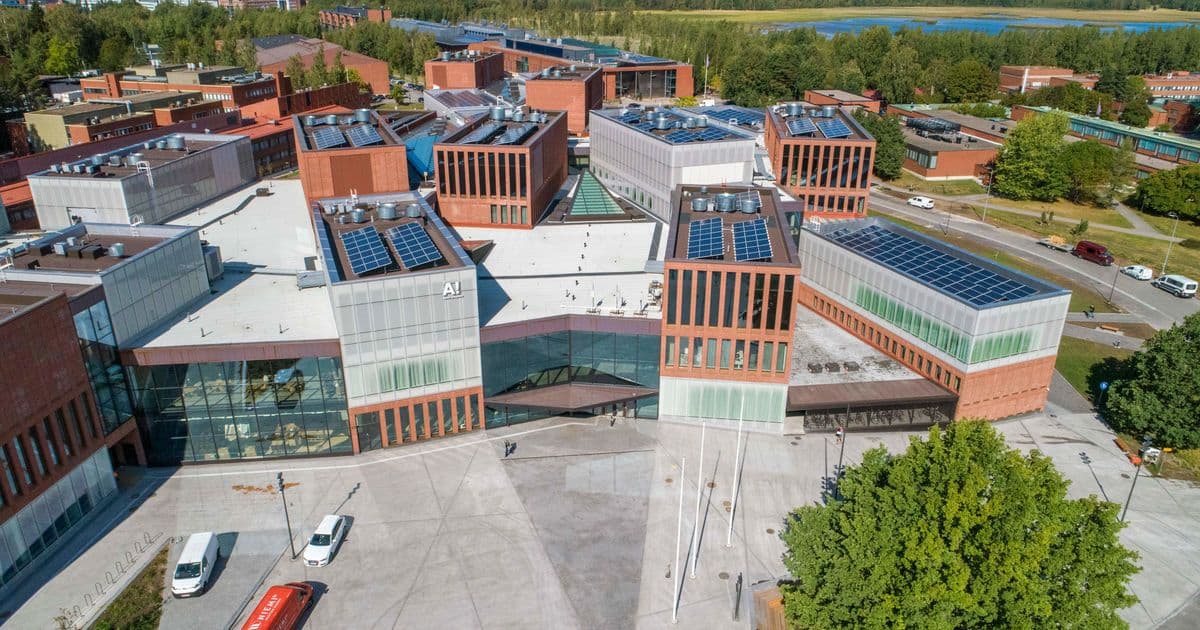
2. Architectural Association (AA) – School of Architecture (London, UK)
The AA is famed for its radical, experimental pedagogy. Through its unit system, students tackle everything from urban ecology to adaptive reuse in a hands-on, provocative manner. Founded in 1847, the independent AA has long challenged conventional practice. Today it foregrounds environmental and cultural questions: design studios probe climate-responsive architectures, biomimicry, and materials like earth or mycelium for regenerative construction. Critical discourse is as valued as craft, producing graduates who think as both designers and activists.
Key Focus Areas: Ecological architecture, critical design theory.
Signature Studio / Lab / Output: Eco-Machines Studio – an atelier where students design like ecologists, blurring biology and architecture (e.g. living wall systems); plus the AA’s legendary public exhibitions and lectures on sustainable urban futures.
Recognition: The AA is one of the world’s most prestigious architecture schools, “committed to…improving…cities and the environment”. Alumni include Pritzker winners and sustainability pioneers.
What Tocco loves: “Trains students to design like ecologists—with tactility, ethics, and planetary scope.”
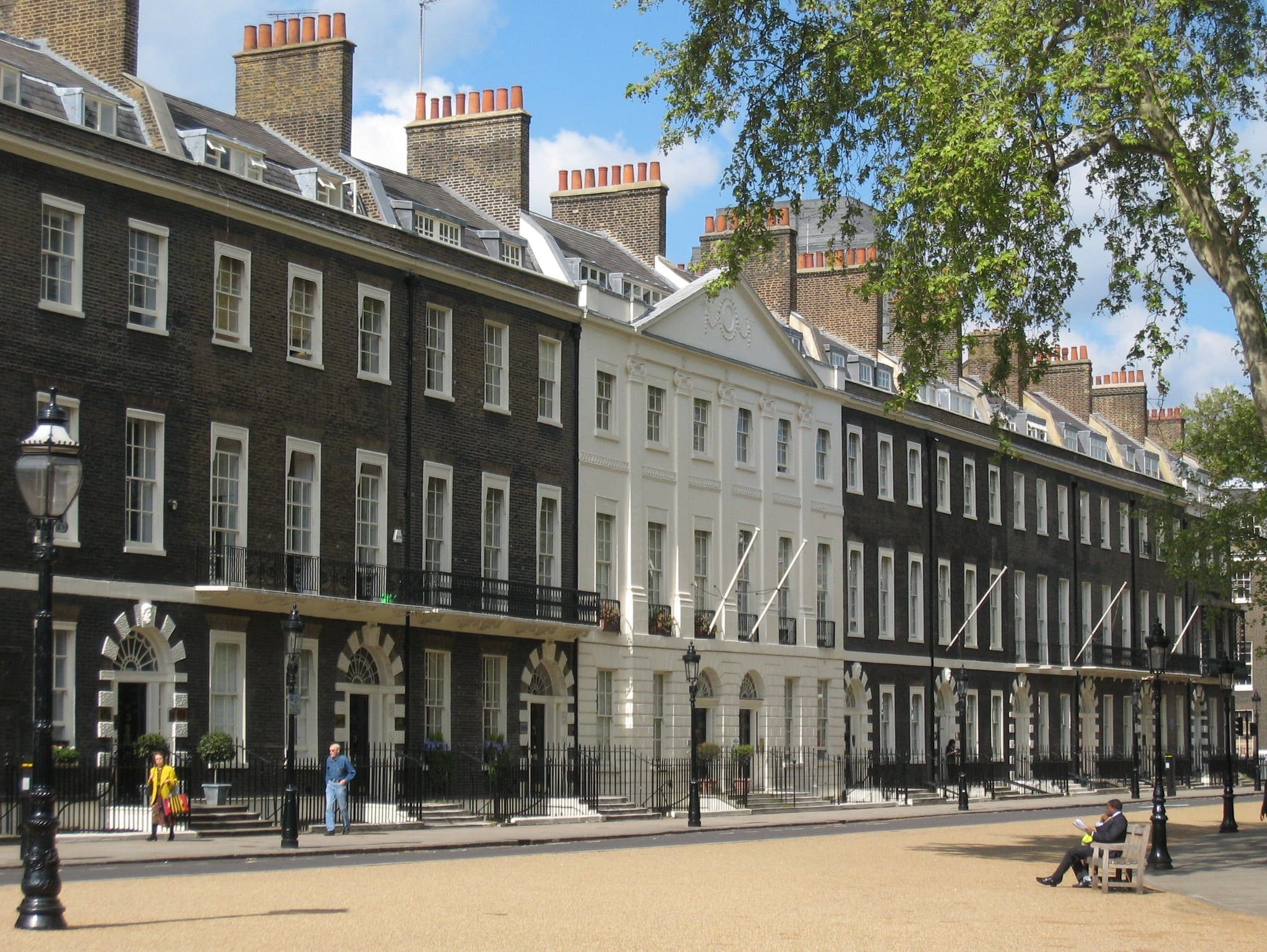
3. Carnegie Mellon University – School of Design (Pittsburgh, USA)
Carnegie Mellon’s design school has taken a bold stance on shaping futures. It launched the world’s first doctoral program in Transition Design, a cutting-edge field focused on systems-level change for sustainability. Students are immersed in design for social innovation, learning to address “wicked problems” like climate change through a mix of design, science, and social theory. CMU’s curriculum emphasizes long-term thinking: projects might envision sustainable cities in 50 years or redesign global product lifecycles.
Key Focus Areas: Transition design and systems thinking; design for social and environmental justice.
Signature Studio / Lab / Output: The Transition Design Institute, co-founded by CMU faculty, which brings together design, sustainability science and communities to prototype new lifestyles and services. Also, CMU’s many interdisciplinary labs (from intelligent environments to policymaking) ensure design students collaborate across campus.
Recognition: Long a leader in design education, CMU is now globally respected for championing design’s role in sustainability transitions. Its framework is being adopted by universities worldwide.
What Tocco loves: “Empowers designers to redesign society—teaching how to guide communities from today’s chaos to resilient futures.”
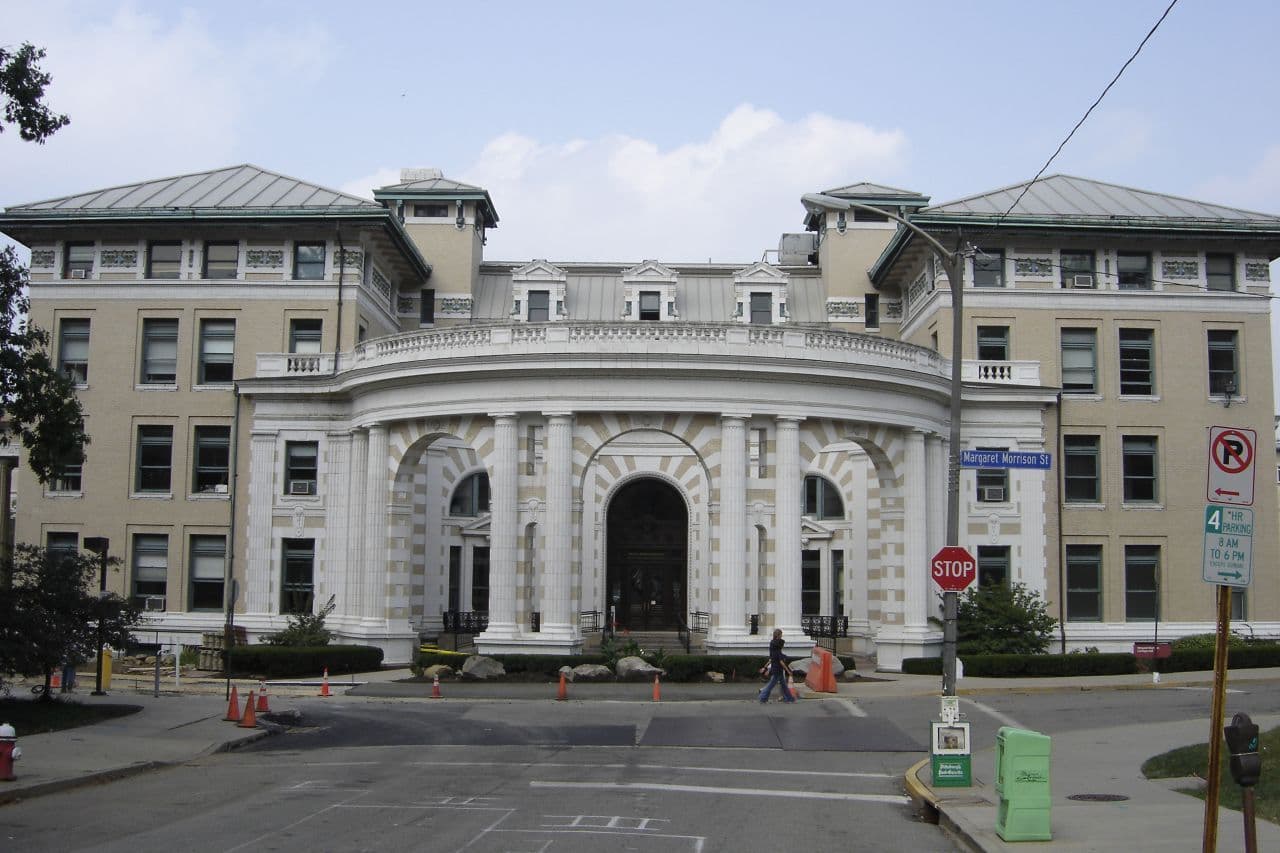
4. Central Saint Martins (UAL) – MA Material Futures (London, UK)
Central Saint Martins’ Material Futures program epitomizes experimental design for a circular age. This transdisciplinary course invites students from science, fashion, product design and beyond to collaboratively ask, “How will we live in the future?” by making it. In studio, designers brew bioplastics from algae, grow textiles from microbes, and speculate on post-natural ecologies. Industry briefs (for example, rethinking luxury goods sustainably) push students to consider full lifecycles. According to the programme, students “explore how design and engineering can be more circular, ethical and sustainable,” often aligning projects with the UN Sustainable Development Goals.
Key Focus Areas: Circular design, speculative futures, bio-design.
Signature Studio / Lab / Output: Material Futures Lab – an open material library and fab-space where prototypes like mushroom mycelium furniture or electronic waste upcycling are born. CSM also recently launched an MA Biodesign to complement Material Futures, cementing its role in living-systems design.
Recognition: Part of University of the Arts London, CSM is renowned for producing visionary designers. Its Material Futures alumni have developed award-winning sustainable materials and social innovations.
What Tocco loves: “Makes the future tangible – turning algae, insects, and waste into objects that challenge today’s conventions.”

5. Columbia University – Graduate School of Architecture, Planning and Preservation (New York, USA)
Columbia’s GSAPP is a powerhouse blending architectural design with cutting-edge research. Students here engage with everything from natural low-carbon materials to data-driven urbanism. The school’s labs exemplify its innovative spirit: the Natural Materials Lab, for instance, “promotes equitable design using natural, low-carbon, and nontoxic building materials”, giving architecture students direct experience with earth, bioplastics, and other sustainable resources. Alongside design studios, GSAPP offers critical theory seminars examining climate justice, preservation in a warming world, and more.
Key Focus Areas: Computational design + sustainability, climate-resilient urban design.
Signature Studio / Lab / Output: Natural Materials Lab (developing new uses for clay, bamboo, algae, etc., and partnering with communities on healthy materials). Also the Urban Design Lab in collaboration with Earth Institute, addressing long-term sustainable urbanism.
Recognition: Regularly ranked among the top architecture programs, Columbia GSAPP is known for its multidisciplinary approach—combining architecture, urban planning, preservation, and real estate to holistically tackle modern challenges.
What Tocco loves: “Bridges high tech and low tech – one day it’s parametric models and data, next day it’s rammed earth and mycelium bricks, all in service of resilient design.”
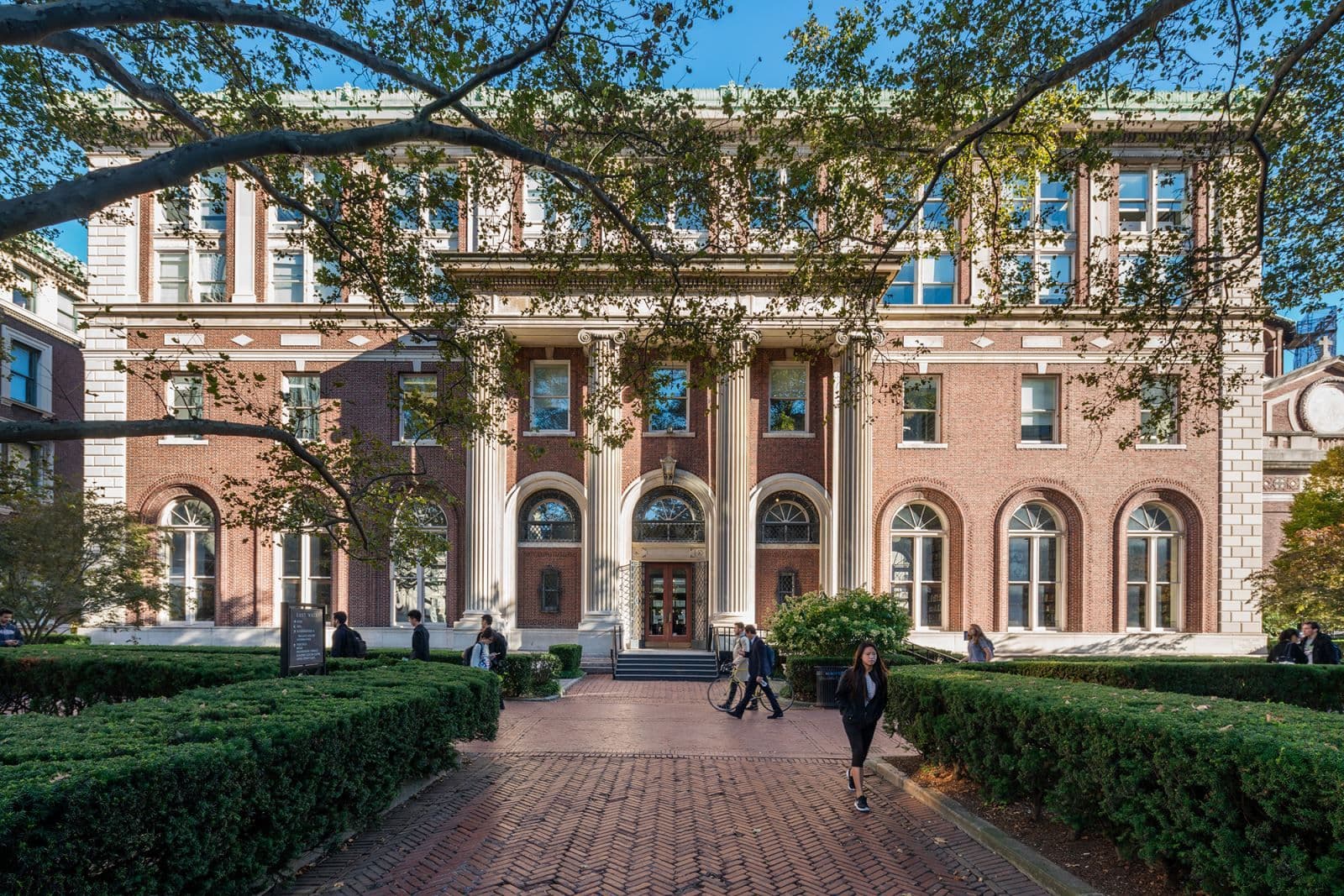
6. Cornell University – College of Architecture, Art, and Planning (Ithaca, USA)
At Cornell AAP, a new paradigm of circular architecture is emerging. The college’s Circular Construction Lab advances the shift “from linear material consumption towards circular economy” in building design. Architecture students learn to see buildings as material banks: studios in deconstruction design teach how today’s structures can become tomorrow’s resources. Beyond architecture, Cornell’s design and urban programs emphasize regional ecosystems and community engagement, leveraging the university’s strengths in agriculture and engineering.
Key Focus Areas: Circular construction and material reuse; regenerative architecture, climate-adaptive design.
Signature Studio / Lab / Output: Circular Construction Lab (CCL) – a research/design unit founded by Prof. Felix Heisel to prototype methods for easy disassembly of buildings and reuse of components. Also, Cornell’s Regenerative Architecture Lab explores local bio-based building materials (like regional timber, agricultural waste) for low-carbon construction.
Recognition: Cornell’s architecture program is Ivy League-caliber and consistently top-ranked. Its CCL has gained international notice for practical innovations in circular building (featured in Metropolis magazine as leading the charge towards reusability.
What Tocco loves: “Proves buildings can live many lives – teaching designers to build not as final acts, but as chapters in an ongoing material story”

7. Delft University of Technology – Faculty of Industrial Design Engineering (Delft, Netherlands)
TU Delft’s design and architecture programs are renowned for marrying Dutch pragmatism with forward-thinking sustainability. In Industrial Design Engineering, students are taught to embed circular principles from the start: courses like Towards Circular Product Design train them to transition from the linear “take-make-waste” model to circular systems. Meanwhile, Delft’s architecture faculty (BK) emphasizes research and innovation; it is praised as “renowned worldwide for addressing sudden social and cultural problems…making it one of the most competitive in the field”. Theory and practice go hand in hand as students design energy-positive buildings, modular structures, and climate-adaptive neighborhoods.
Key Focus Areas: Circular product design methods, sustainable building technology, design for global societal needs.
Signature Studio / Lab / Output: Bucky Lab – an experimental design-build studio where architecture students fabricate full-scale sustainable prototypes (from solar-powered tiny houses to fiber-composite façades). In the design faculty, the Circular Product Design research group develops tools to design products for multiple lifecycles, influencing EU policy and industry.
Recognition: TU Delft is consistently among the top in architecture and design education. Its legacy includes countless innovations in sustainable design (from groundbreaking flood-resilient architecture to widely used circular design frameworks).
What Tocco loves: “Combines Dutch design clarity with eco-innovation – every project must be ingenious and responsible, solving real problems for people and planet.”

8. Design Academy Eindhoven (Eindhoven, Netherlands)
Design Academy Eindhoven (DAE) is an incubator of avant-garde designers who often blur the line between product design, art, and research. Famous for its conceptual approach, DAE has increasingly centered material and ecological consciousness in its pedagogy. Students engage in self-directed projects that might reimagine food systems, create speculative bio-products, or critique consumer culture. The academy cultivates “globally networked design studios while maintaining strong contextual roots in Dutch and European design culture” – meaning students collaborate across borders but ground ideas in local realities.
Key Focus Areas: Speculative design, social design, sustainable materials exploration (often through self-initiated experiments with new or recycled materials).
Signature Studio / Lab / Output: Geo-Design studios – a series of cross-disciplinary investigations where students and faculty use design to unpack global systems (e.g., mining, agriculture) and propose alternative futures. Also, the academy’s annual Graduation Show has become a barometer of sustainable design trends, with projects on circular fashion, bioplastic consumer goods, and more making international headlines.
Recognition: DAE is consistently ranked among the top design schools in the world for its creativity. It’s known for producing alumni like Dave Hakkens (Precious Plastic), Bas van Abel (Fairphone) and others who have launched influential sustainable design movements.
What Tocco loves: “Fosters design provocateurs – students who ask uncomfortable questions about our material world, then answer with poetic, practical prototypes for change.”

9. École Polytechnique Fédérale de Lausanne (EPFL) – ENAC (Lausanne, Switzerland)
EPFL’s architecture and engineering school (ENAC) sits at the intersection of high-tech innovation and sustainability. The Laboratory of Architecture and Sustainable Technologies (LAST) at EPFL embodies this, focusing “on sustainable architecture, emphasizing transitions towards sustainability at different scales…and integration of innovative criteria into design”. Architecture students here might collaborate with materials scientists to develop carbon-sequestering concrete, or with ecologists to design buildings that enhance biodiversity. EPFL also hosts the Smart Living Lab (with partner institutions) – a research hub prototyping the future of low-carbon living environments.
Key Focus Areas: Energy-efficient building design, novel sustainable materials, urban sustainability transitions.
Signature Studio / Lab / Output: LAST (as mentioned) – which translates cutting-edge research (solar facades, life-cycle modeling, etc.) directly into studio teaching. Plus, the EssentialTech Center at EPFL, where designers and engineers co-create sustainable solutions for developing contexts (like affordable solar devices or circular sanitation systems).
Recognition: EPFL is a top global science and tech university. Its architecture program has gained distinction for blending computational prowess with environmental design. EPFL-built experimental structures (like the adaptive lattice dome of the HiLo project or zero-waste “Neighbourhood” prototypes) are showcased internationally.
What Tocco loves: “Where lab and studio merge – students don’t just learn sustainability metrics, they help invent the materials and systems that define sustainability’s future.”
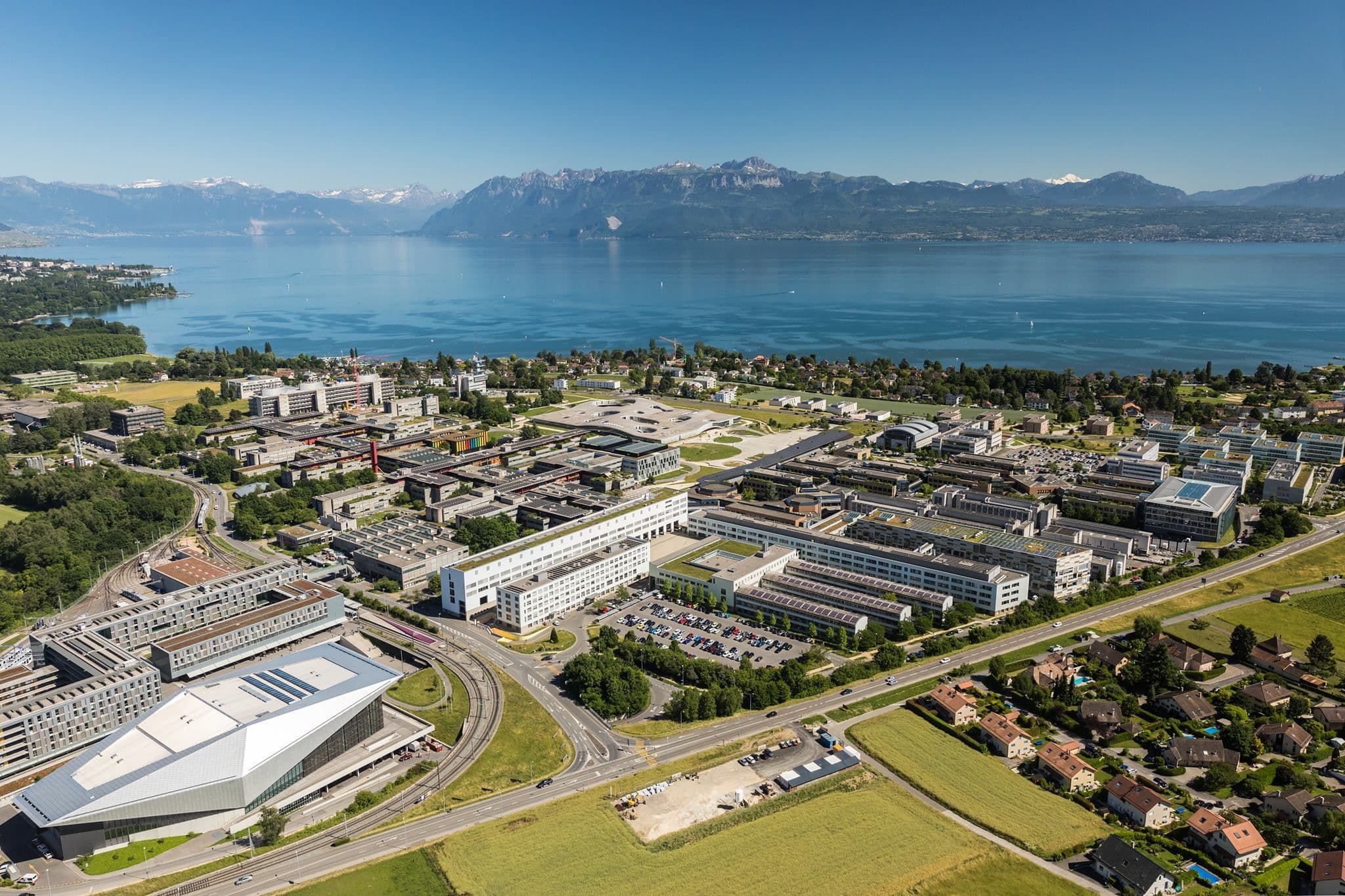
10. ETH Zurich – Department of Architecture (Zurich, Switzerland)
At ETH Zurich, one of the world’s most prestigious technical universities, architecture education combines scientific rigor with bold experimentation. ETH’s architecture program “focuses on providing the tools to answer problems of modernity, such as…scarcity of natural resources,” uniting architecture and engineering for “ecologically balanced answers”. Students benefit from renowned research groups like the Block Research Group (famous for ultra-lightweight, material-efficient structures) and the Gramazio Kohler lab (pioneering robotic fabrication with natural materials). Sustainability isn’t a separate topic; it’s embedded in design computation, structural design, and building technology courses.
Key Focus Areas: Advanced structural design for resource efficiency, digital fabrication with sustainable materials, climate-responsive architecture.
Signature Studio / Lab / Output: HiLo / NEST Project – a collaboration where ETH students helped design a unit of a living lab building featuring an adaptive solar facade and funicular vaulted roof (demonstrating how minimal material can achieve maximum performance). Also, DFAB House – an ETH-led project creating a house with robotically fabricated timber and optimized concrete forms, drastically cutting material use. Each year, integrated studios tackle real challenges like zero-emission neighborhoods in the Alps or circular housing systems.
Recognition: ETH is perennially top-ranked globally. It’s seen as a leader in sustainable engineering within architecture: “experts from architecture and engineering…provide…ecologically balanced answers to future professionals”. Pritzker winners like Norman Foster and recent rising stars in climate design are among its alumni.
What Tocco loves: “Proves that high-tech can be green – from algorithms that cut carbon to robots that build with earth, ETH shows innovation and sustainability as two sides of the same coin.”
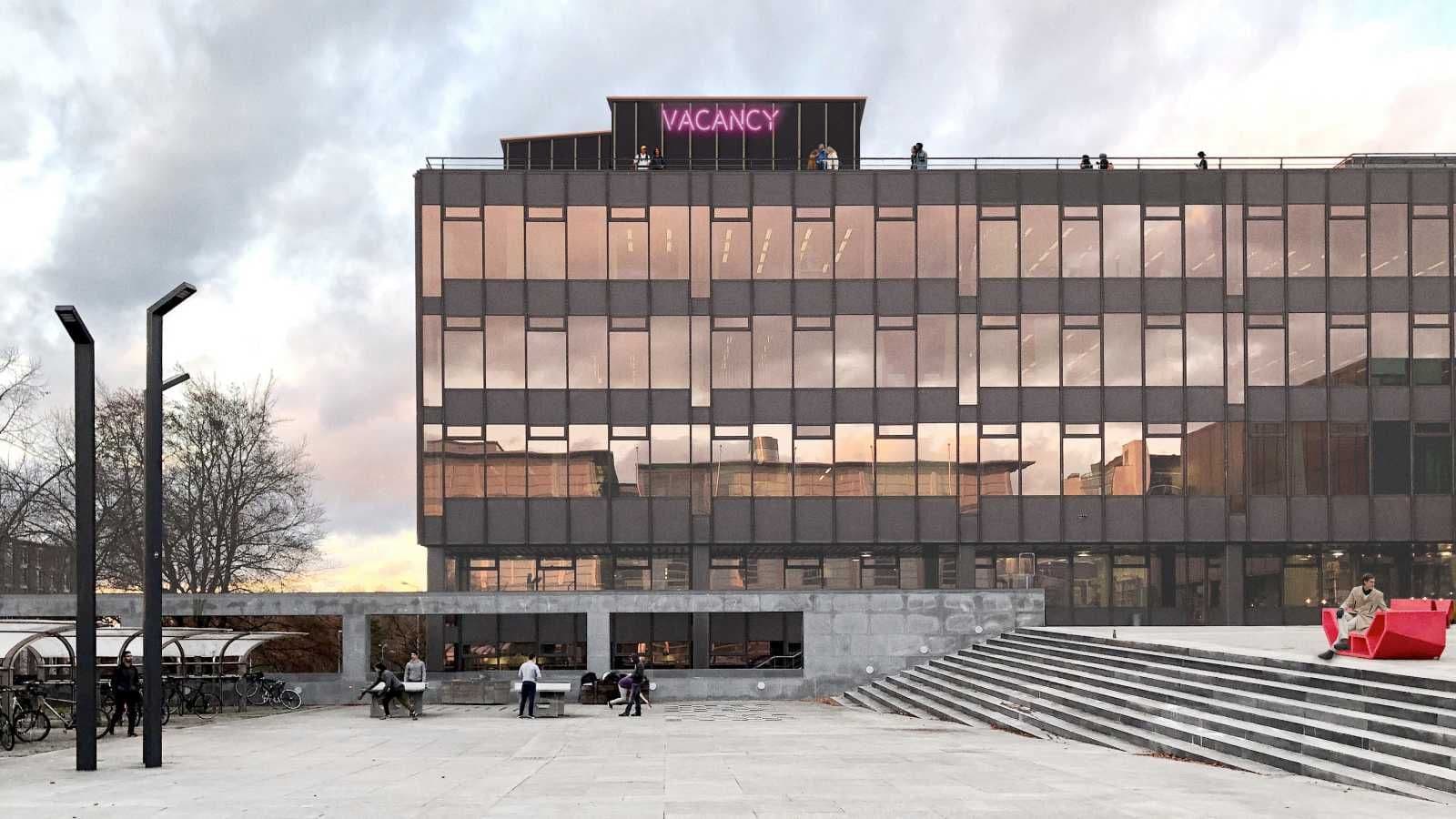
11. Harvard University – Graduate School of Design (Cambridge, USA)
Harvard’s GSD is a nexus of design thought leadership, now turning that influence toward sustainability and social equity. In Harvard’s words, “The Graduate School of Design educates leaders…to make a resilient, just, and beautiful world”. This ethos permeates studios in architecture, landscape, and urban planning: students might design resilient coastal infrastructures one semester and circular product systems the next. GSD’s labs and initiatives, such as the Energy & Environment Fellows or Materials Processes and Systems (MaP+S) Group, drive research into low-carbon materials, climate adaptation strategies, and beyond.
Key Focus Areas: Resilient urbanism, sustainable design technology, climate justice in design.
Signature Studio / Lab / Output: GSD Climate Modeling Lab – enabling data-driven approaches to design for sea-level rise, heat, etc.; and the Healthy Materials Collaborative which links GSD with Harvard’s public health school to eliminate toxins and lower embodied carbon in buildings. Notable output: the “Loeb Fellowship” program annually brings sustainability changemakers (like climate-focused architects, policymakers) to teach and mentor.
Recognition: Harvard GSD is consistently among the top global design schools. It boasts one of the oldest landscape architecture programs (now pushing urban ecology frontiers) and has recently garnered attention for its bold faculty hires in ecology and technology, retooling design education for the 21st century.
What Tocco loves: “Mixes deep tradition with radical vision – Harvard’s studios might cite historic precedent, but they are firmly focused on designing for a resilient, just future.”
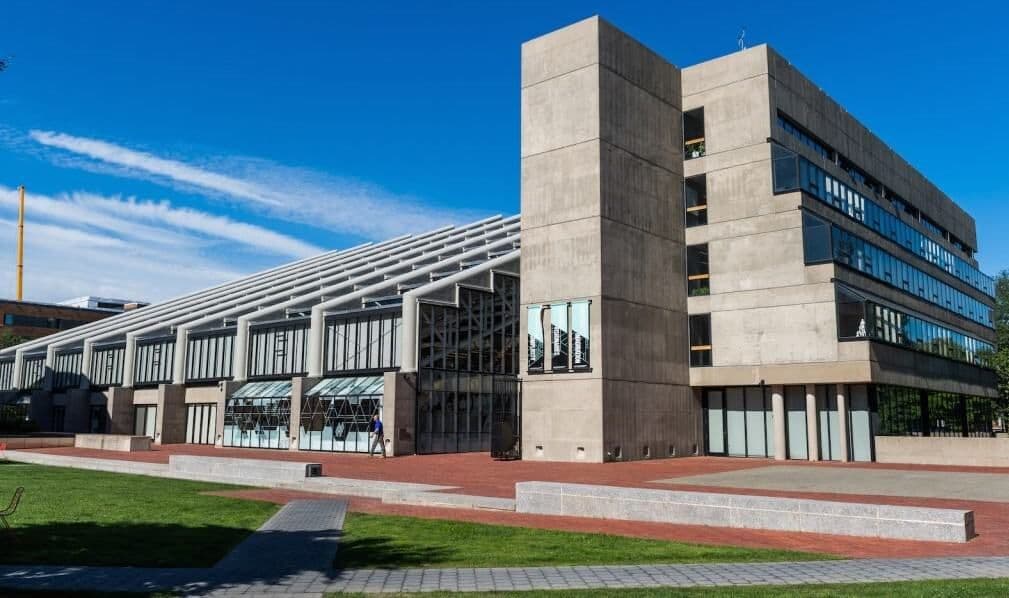
12. Hong Kong Polytechnic University – School of Design (Hong Kong, China)
PolyU Design is Asia’s leading design school known for blending innovation with cultural context. Situated in Hong Kong’s dense urban environment, it emphasizes sustainable product and service design for modern cities. Programs in Product Design, Interaction, and Urban Environments all incorporate sustainability modules – from green mobility to smart materials. The school hosts multiple research labs; for example, the Asian Lifestyle Design Lab generates knowledge for “innovative, sustainable products and services for the Asian lifestyle,” exploring social, cultural, and environmental drivers of lifestyle change. PolyU’s Design students often tackle region-specific issues like aging populations, compact housing, and waste management through a sustainability lens.
Key Focus Areas: Sustainable product/service design, ergonomics and well-being, design for urban density.
Signature Studio / Lab / Output: Asian Lifestyle Design Lab – focuses on sustainable consumer trends and micro-production in Asian contexts, recently researching zero-waste household systems and circular fashion in China. Also, PolyU’s Material Resource Centre and Fab Lab give students space to experiment with new materials (from bamboo composites to e-waste recycling).
Recognition: PolyU Design is consistently ranked among top international design schools and is regarded as the best in Hong Kong. It has earned Green GDN (Good Design) Awards for campus sustainability initiatives and partners with institutions like the RCA (UK) on research into AI and sustainable materials.
What Tocco loves: “Integrates East and West, tradition and tech – showing how design for sustainability can honor local cultures while inventing globally relevant solutions.”
13. Institute for Advanced Architecture of Catalonia (Barcelona, Spain)
IAAC is a small, pioneering school turning bold ideas into built experiments. Its focus is on advanced architecture for sustainable cities and self-sufficient habitats. At IAAC’s Valldaura campus—set in a Catalan forest—Master’s students literally design and build ecological structures from scratch, using local materials and clean energy. The Master in Advanced Ecological Buildings & Biocities (MAEBB) “equips students to design and build the next generation of buildings and cities that address the planet’s urgent climate challenges". Back in Barcelona, IAAC’s Fab Lab Barcelona (part of the global Fab Lab network) empowers designers to use digital fabrication for circular design solutions.
Key Focus Areas: Self-sufficient architecture, bio-fabrication, urban systems innovation.
Signature Studio / Lab / Output: Valldaura Labs – IAAC’s 130-hectare living laboratory for sustainable design where students have built projects like The Solar Greenhouse (a fully off-grid food-energy system) and The Voxel (a quarantine cabin made of locally harvested timber and bio-based resin). In Barcelona, the Fab City Research Lab leads the “Fab City” global initiative to achieve locally productive, globally connected cities by 2054.
Recognition: Though boutique in size, IAAC punches above its weight. It’s globally acclaimed for its hands-on approach: each year, prototypes from IAAC win awards (e.g., solar decathlons, design innovation prizes). The institute’s faculty are leaders in computational design, urban ecology, and more.
What Tocco loves: “Education by making – students fell trees, mix bio-concrete, program sensors…learning that sustainable innovation is equal parts mud and code.”

14. Massachusetts Institute of Technology (MIT) – School of Architecture + Planning / MIT Media Lab (Cambridge, USA)
MIT’s design ecosystem is uniquely positioned at the convergence of technology, art, and science. Architecture at MIT fosters “technology optimism and modern approaches” while instilling social, cultural and environmental responsibility in students. The result: studios designing floating cities for climate refugees, or low-carbon materials grown with synthetic biology (pioneered in Neri Oxman’s Mediapedia). The legendary MIT Media Lab, along with labs like the Sustainable Design Lab, give product designers unprecedented resources to experiment with AI, robotics, and biology to solve sustainability issues. And MIT’s newly launched Morningside Academy for Design bridges all disciplines to tackle global challenges (climate chief among them) through design innovation.
Key Focus Areas: High-tech sustainable design (sensing, data, AI), global development design, material innovation.
Signature Studio / Lab / Output: MIT D-Lab – a program offering classes and field work on design for the developing world, focusing on locally sustainable products (cookstoves, water filters) and circular economies. In architecture, the MIT-LUMA Arles Lab was established in 2024 to pursue “paradigm-shifting innovations at the nexus of art, science, technology, conservation, and design” – exploring new materials and sustainability models in collaboration with a foundation in France.
Recognition: MIT’s architecture program and Media Lab are perennially top-ranked. The institute’s influence is felt in everything from open-source sustainable design tools to alumni startups in clean tech. As one reviewer noted, the program empowers students with skills “to design future spaces and technologies where humans can go through life together” responsibly.
What Tocco loves: “Blends scientific rigor with imaginative prototyping – an MIT student might 3D-print algae one day and simulate whole-city energy flows the next, all in pursuit of a better world".
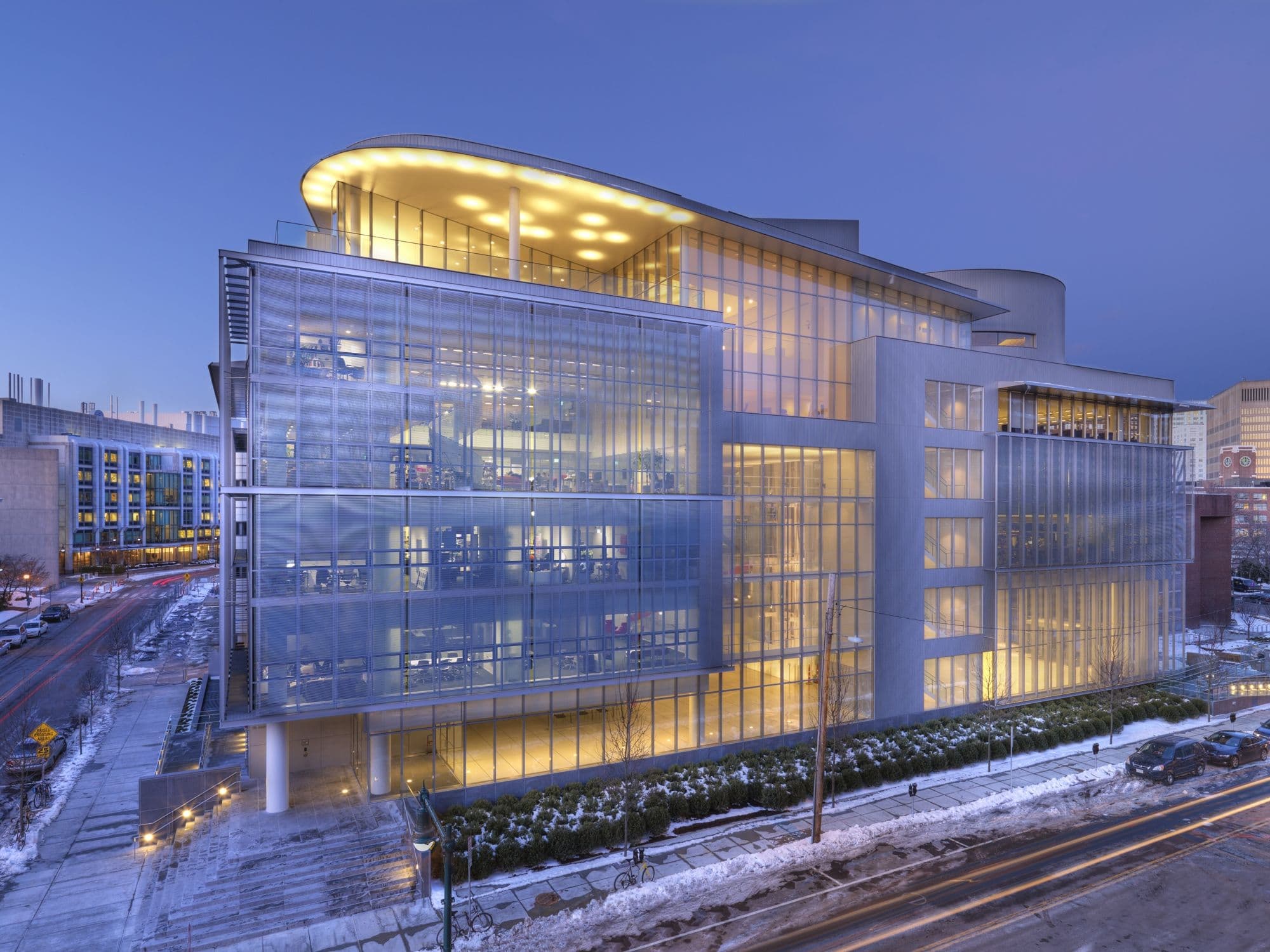
15. National Institute of Design (NID) – (Ahmedabad, India)
NID is a legendary design school that has always integrated sustainability, long before it was buzzworthy. Rooted in India’s crafts and making heritage, NID teaches product designers to honor materials and local context. Today, that means exploring natural fibers, low-cost innovation, and frugal design for impact. NID’s Innovation Center for Natural Fiber exemplifies this spirit: it looks to India’s rich resources in banana fiber, bamboo, coir, hemp and more “towards sustainability through a design-driven approach,” leveraging these fibers for new products and livelihoods. Studios often partner with rural artisans or tackle challenges like clean water, agricultural tools, and upcycling waste, reflecting a “design for society” ethos.
Key Focus Areas: Sustainable craft and materials, social innovation, low-cost product design.
Signature Studio / Lab / Output: Innovation Center for Natural Fiber (ICNF) – a research lab at NID Gandhinagar focusing on R&D with natural fibers (jute composites, hemp bioplastic, water hyacinth products) to benefit both environment and local economies. NID’s Lifestyle Accessory Design program also champions new eco-materials (e.g., plant-based leather alternatives) in consumer products.
Recognition: Recognized by ICO-D and others, NID has been called one of the foremost design schools in Asia. It has a 60+ year legacy of human-centered design – alumni have shaped everything from sustainable crafts enterprises to India’s governmental design policies.
What Tocco loves: “Where tradition meets innovation – students work with artisans and bio-scientists alike, proving sustainability can be a rich tapestry woven from new and old threads.”

16. National University of Singapore (NUS) – School of Design and Environment (Singapore)
NUS is Asia’s top-ranked university, and its design and architecture programs reflect Singapore’s drive for sustainable innovation. The Department of Architecture at NUS offers courses in urban design, sustainable design, landscape architecture, and conservation, all led by a multidisciplinary, international faculty. Students learn tropical sustainable architecture (naturally ventilated buildings, zero-energy high-rises) and product designers tackle themes like smart cities and aging populations with sustainable solutions. NUS’s Division of Industrial Design (DID) likewise infuses projects with circular economy thinking and often wins global awards with concepts merging tech and sustainability.
Key Focus Areas: Tropical architecture & urban ecology, sustainable product-service systems, heritage and sustainability in dense cities.
Signature Studio / Lab / Output: Design Incubation Centre – a research unit in NUS-DID that has produced notable projects like a biodegradable laptop and modular repairable consumer goods. In architecture, the Centre for Integrated Sustainable Built Environment drives research on net-zero housing in the tropics and resilient urban planning. The annual NUS Urban Challenge also gives students an innovation platform (recent theme: zero-waste food systems in cities).
Recognition: NUS routinely tops Asian university rankings. BLT’s recent review noted how entering the NUS architecture site one sees headlines like “Shaping Urban Visionaries…Embracing Multiculturalism…Innovative Design Ideas,” reflecting the program’s breadth. Graduates populate leading firms and city agencies across Southeast Asia, spearheading green building initiatives.
What Tocco loves: “Models a vision of sustainable tropics – combining high-tech efficiency with lush biophilic design to meet Asia’s urban challenges head-on.”

17. Parsons School of Design (The New School) – (New York, USA)
Parsons has woven sustainability and social impact into its DNA. From fashion to product design to architecture (Parsons houses the Healthy Materials Lab and active sustainability curricula), the school prepares designers to consider materials health, lifecycle, and communities in every decision. The Healthy Materials Lab at Parsons exemplifies its mission: a “design research lab…dedicated to a world in which people’s and environmental health is placed at the center of all design decisions”. Interior design and architecture students there learn to eliminate toxins and cut carbon in building materials. Likewise, product design students partner with environmental organizations to create climate-forward products and services.
Key Focus Areas: Material health and sustainability, social innovation, design for equity (Parsons was an early adopter of human-centered design for underserved communities).
Signature Studio / Lab / Output: Healthy Materials Lab (HML) – provides open resources and courses on low-carbon, non-toxic materials, influencing curricula nationwide. Also, Parsons’ Design for Social Innovation programs and collaborations (e.g. with UN Sustainability Development Solutions Network) yield public-facing projects like sustainable urban farming systems and upcycled fashion lines.
Recognition: Part of The New School, Parsons is consistently top-ranked for art and design. It has won multiple SDG Awards for academia and its alumni frequently appear in Fast Company’s sustainable innovation lists. The Parsons approach has been to use design as a tool for urban resilience and social change, a philosophy now echoed globally.
What Tocco loves: “Designs with a conscience – every Parsons project asks not just Can we make it? but Should we make it, and how can we make it healthier for people and planet?”

18. Politecnico di Milano – School of Design (Milan, Italy)
Italy’s Politecnico di Milano is a leader in design and engineering, and its School of Design is known for uniting Italian design excellence with rigorous sustainability frameworks. The school offers a Specializing Master in Design for Sustainability and Regeneration, covering circular economy and life-cycle methods. Coursework across product and interior design emphasizes eco-design strategies: students learn to reduce environmental impact without sacrificing aesthetics or function (very Italian!). Polimi’s research labs like DESIS Lab Milano (co-founded by sustainability guru Ezio Manzini) pioneered the field of social innovation in design. Additionally, Polimi integrates architecture and circularity topics in courses to show designers how buildings and products can loop materials back into use.
Key Focus Areas: Product service system design for sustainability, circular economy business models, low-carbon interior and furniture design.
Signature Studio / Lab / Output: POLIMI DESIS Lab – focusing on community-centered sustainable innovations (e.g., co-housing, sharing economy platforms). The university also runs the POLI.design consortium, which hosts industry-sponsored projects like redesigning fashion production for circularity and developing sustainable packaging startups. One flagship output: the “Circular Design Toolkit” used by companies to implement circular strategies, developed by faculty and students.
Recognition: Politecnico di Milano is ranked the #1 design school in Italy and often in Europe’s top 10. It’s known for producing well-rounded designers skilled in both creativity and technical analysis (the “Polimi” approach). Their students frequently win prizes (e.g., the James Dyson Award for sustainable inventions).
What Tocco loves: “Embraces la bella figura and sustainability – proving that elegant Italian design and rigorous eco-innovation can walk hand in hand into a regenerative future.”
19. Pontifical Catholic University of Chile – School of Design & Architecture (Santiago, Chile)
At UC Chile (PUC), design and architecture education is inflected by the urgent social and ecological questions of Latin America. The School of Architecture, one of the most prominent in the region, and the Design program encourage students to engage with local contexts: think designs for earthquake-resilient housing, or low-cost products for rural communities using local materials. Sustainability is addressed both in high-tech ways (the university has solar energy research integrated into building design studios) and low-tech (courses on vernacular materials like adobe or bamboo for modern use). The emphasis on public-facing work is strong: studios often culminate in real-world builds or exhibitions that involve the community.
Key Focus Areas: Social housing and participatory design (Alejandro Aravena, Pritzker-winning alum, exemplifies this), sustainable materials in construction, circular systems for emerging economies.
Signature Studio / Lab / Output: Centro de Innovación en Madera – a center at PUC promoting sustainable timber design in Chile, resulting in prototypical structures that showcase new timber tech. Also, the design school’s Innovation and Circular Economy Hub connects students with Chilean industries to implement circular product strategies (like recycling fishing nets into furniture). PUC’s public design-build workshops (often student-led) have built community centers and emergency shelters from upcycled materials across Chile.
Recognition: UC Chile is ranked #2 in Latin America, and its School of Architecture is highly esteemed globally. Graduates have had major influence: besides Aravena’s social housing innovations, PUC-trained designers and architects regularly feature in global exhibitions (like the Venice Biennale) demonstrating regional solutions to global issues.
What Tocco loves: “Design with society in mind – whether it’s a quake-proof community hub or a line of eco-products empowering artisans, this school shows how local action can ripple towards global sustainability.”

20. Pratt Institute – School of Design / School of Architecture (New York, USA)
Pratt Institute imbues its design education with New York pragmatism and a deep commitment to sustainability. Pratt’s Sustainability Center provides resources to ensure students critically consider the impacts of the materials they use. In practice, this means industrial design students weigh end-of-life and source of every component, architecture students optimize daylight and structure to reduce energy and materials, and interior designers prioritize healthy, low-carbon materials. Pratt’s Brooklyn campus even serves as a living lab (with green buildings and art installations addressing environmental issues). The Pratt Material Lab houses over 25,000 material samples, helping students compare eco-attributes of everything from fabrics to polymers.
Key Focus Areas: Sustainable materials research and application, community design and planning (especially in urban settings), design for climate adaptation.
Signature Studio / Lab / Output: Center for Sustainable Design Strategies (CSDS) – a hub that supports faculty, students, and alumni in integrating sustainability and hosts projects like Pratt’s Recover initiative (designing products from industrial waste streams). Pratt’s Green Week charrettes bring together architecture and design students to solve campus or neighborhood sustainability challenges (like zero-waste campus events, or modular disaster housing proposals).
Recognition: Pratt is consistently highly ranked in design and architecture in the U.S. It received a “Real Impact” award for its sustainability curriculum integration. Graduates often lead sustainability efforts in firms.
What Tocco loves: "Walks the talk – Pratt gives designers the toolkit and the conviction to make every design decision count for people and planet."
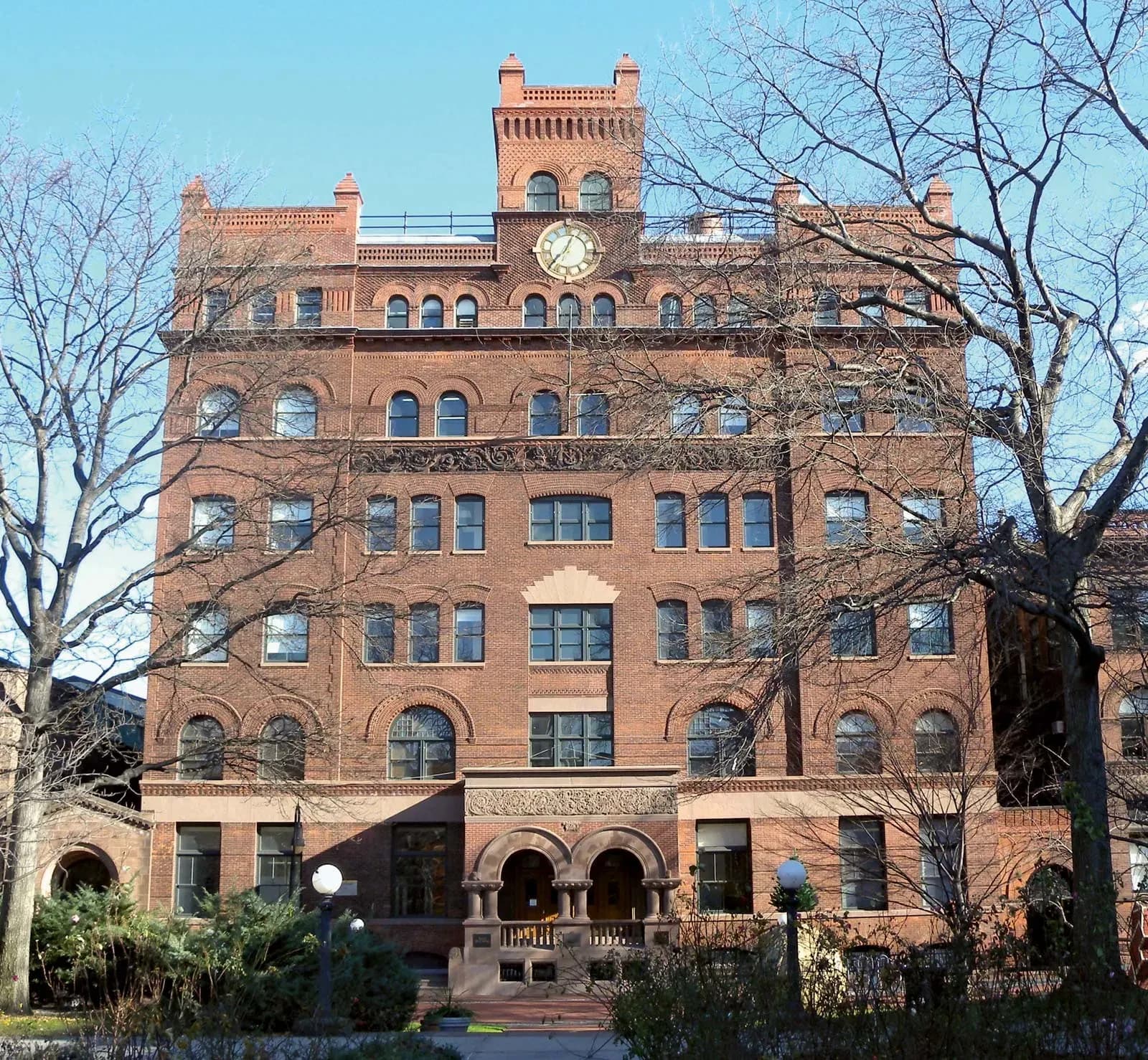
21. Rhode Island School of Design (RISD) – (Providence, USA)
RISD approaches sustainability through the lens of art and nature. The campus’s Edna Lawrence Nature Lab, founded in 1937, offers students unmediated access to natural specimens and fosters creative inquiry in biomimetics and ecology. Today, that means RISD students might study bird wing structures to inspire efficient design or grow bacterial cellulose for a new material. Programs across furniture, industrial design, textiles, and architecture all push sustainable practices: from natural dyeing and closed-loop fashion in Textiles to resilient urban design in Landscape Architecture. RISD’s culture encourages critical making—asking tough questions about consumerism and waste, then crafting beautiful alternatives.
Key Focus Areas: Biomimicry and bio-informed design, handcraft + sustainable making, environmental justice through art/design.
Signature Studio / Lab / Output: Nature Lab – including a Biodesign Makerspace where students experiment with biomaterials and living systems (algae-based bioplastics, mushroom leather, etc.). Also, RISD’s Global Futures Lab has hosted projects like “Anthropocene Furniture” (using only invasive species wood) and collaborates with Brown University on climate and development issues.
Recognition: RISD consistently ranks among the top art/design schools globally. Its Nature Lab model has been emulated by other schools, and it was highlighted on national media for “designs using nature’s blueprints… inspiring the future of sustainable design.” RISD alumni are found leading sustainability initiatives from Patagonia’s product design to city resiliency offices.
What Tocco loves: "Connects head, heart, and hand – RISD students fall in love with nature in the lab and field, then channel that inspiration into tactile designs that heal our relationship with the environment."

22. Royal College of Art (RCA) – School of Design (London, UK)
The RCA stands at the vanguard of design futures. Known as the world’s #1 art & design university, it has been a cradle for speculative and critical design, and now leverages that approach to address material and climate crises. The RCA’s programs like MA Design Futures and MA Materials Science (run jointly with Imperial College) focus on emerging issues from ethical tech to circular materials. The school “has long pioneered speculative and critical design through its Design Interactions legacy,” and in its current programs, it foregrounds ethical speculation and systems thinking. Whether it’s designing with AI for sustainability or developing new biomaterials, RCA students marry creativity with research. Projects often imagine future scenarios (e.g., life in a zero-plastic world) as a way to critique and change today’s practices.
Key Focus Areas: Speculative design for sustainability, materials innovation, inclusive and social design.
Signature Studio / Lab / Output: RCA Intelligent Mobility Design Centre – while oriented to transport, it leads research into electrification and circular design of vehicles. Also, the new Materials Science Research Centre at RCA/Imperial produces breakthroughs like self-healing biodegradable composites and runs Material Futures workshops where designers and scientists co-create. The RCA Sustain initiative ensures every grad project considers environmental impact, awarding an annual Sustain Award to the best eco-projects.
Recognition: The RCA is frequently ranked the top art/design school. Its influence in sustainable design is notable.
What Tocco loves: "Harnesses imagination as a tool – at RCA, dreaming of wild sustainable futures isn’t an escape, it’s how designers figure out what to build today to get us there."
23. Singapore University of Technology and Design (SUTD) – (Singapore)
SUTD is a newer player, but its DNA is built on integration: technology + design + sustainability. Co-founded with MIT, SUTD organizes learning around four pillars, one being Architecture and Sustainable Design. Interdisciplinary collaboration is literally built into campus (its award-winning campus by UNStudio is designed to “facilitate cross-disciplinary interaction” and is itself a sustainable structure). Students in ASD tackle projects like zero-energy tropical buildings, parametric urban farming systems, or flood-resilient coastal parks, often with peers from the engineering and information systems pillars. The result is designers fluent in tech and computation as well as ecological principles.
Key Focus Areas: Parametric and computational design for sustainability, sustainable urban systems, human-centric tech integration.
Signature Studio / Lab / Output: SUTD Renewable Energy Integration Lab – where architecture students work with engineers on solar architecture and microgrid design for buildings. The IDC (International Design Centre) at SUTD produces notable projects like portable water purifiers for disaster relief and smart home systems for energy saving, demonstrating their cross-pillar innovation. SUTD’s design studios also often collaborate with Singapore’s urban agencies, yielding proposals that sometimes get piloted in the city.
Recognition: SUTD has quickly risen in prominence in Asia due to its unique curriculum and industry partnerships.
What Tocco loves: "Uniquely hybrid – engineers here sketch and designers code. SUTD shows that solving complex problems means erasing old boundaries between disciplines in favor of one shared mission."
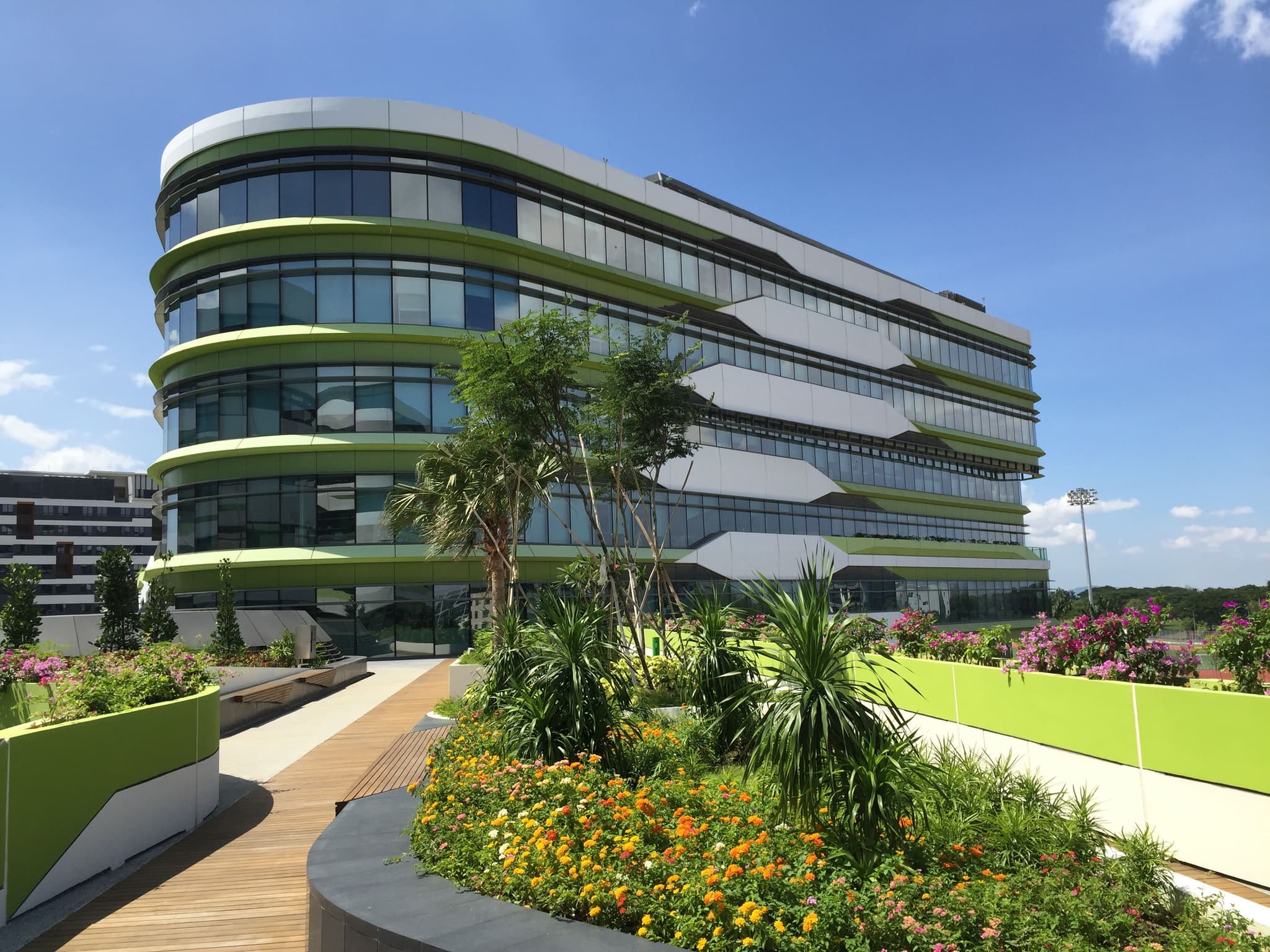
24. Stanford University – d.school & Design Programs (Stanford, USA)
Stanford’s d.school (Hasso Plattner Institute of Design) popularized “design thinking” and remains a crucible of interdisciplinary creativity. While not a degree-granting school, it injects design methods into all of Stanford’s programs and is key in initiatives around sustainability. Encountering different perspectives is “a cornerstone of the d.school,” which is why engineers, business students, and others team up in its courses to tackle challenges like renewable energy adoption or circular consumer products. Stanford’s undergraduate Product Design and graduate Design Impact programs explicitly address themes such as climate action and social innovation.
Key Focus Areas: Human-centered design for global challenges, interdisciplinary innovation, entrepreneurship in sustainability.
Signature Studio / Lab / Output: Extreme Affordability (Design for Extreme Affordability) – a famous course where students design affordable solutions for low-income communities. The d.school’s “University Innovation Fellows” program also equips students globally to lead sustainability and innovation programs at their campuses. In research, Stanford’s Center for Ocean Solutions and d.school have a cross-listed “Ocean Design” initiative to fight marine plastic via design.
Recognition: Stanford’s design programs may not be standalone schools in rankings, but their impact is enormous. They helped establish design thinking as a common approach in tackling sustainability.
What Tocco loves: "Breeds optimistic problem-solvers – Stanford teaches that even the toughest issues (climate, poverty) are design opportunities, and empowers students with the confidence and interdisciplinary know-how to invent solutions together."

25. Tongji University – College of Design and Innovation (Shanghai, China)
Tongji’s College of Design & Innovation (D&I) is a trailblazer in China for sustainable and socially conscious design. It established the Tongji DESIS Lab early on, which has been an active promoter of a design culture caring about sustainability and social innovation, inspiring and transforming design education and practice. The college’s programs are markedly cross-disciplinary: design students work alongside urban planners and engineers on issues like circular economies for megacities or product-service systems to reduce waste in e-commerce. Biomimicry and learning from nature are also emphasized. Uniquely, many courses at Tongji D&I involve corporate and international partners, giving students a platform to implement their ideas at scale.
Key Focus Areas: Sustainable lifestyle innovation, social innovation in communities, design for urban resilience.
Signature Studio / Lab / Output: Tongji DESIS Lab – which focuses on “sustainable lifestyle” research and has projects on urban farming networks, community sharing systems, and improving urban resilience through design activism. Another highlight is the Design & Artificial Intelligence Lab, ensuring that as AI is applied to products and cities, it’s aligned with sustainability and human values. Tongji also co-founded the RISE Network with UNDP – a lab to pilot regenerative solutions across China.
Recognition: Tongji D&I is the leading design school in China’s mainland for sustainable innovation, reflected in its strong showing in international design networks.
What Tocco loves: "Embodies the power of design in a transforming society – in fast-changing Shanghai, Tongji shows how design can steer growth onto a sustainable, community-centered path."

26. UCL (University College London) – The Bartlett School of Architecture (London, UK)
The Bartlett is globally acclaimed for experimental architecture, and it has been quick to integrate climate action and material innovation into its curricula. From undergraduate to research labs, the focus is on pushing boundaries: students investigate biologically integrated design, zero-carbon construction, and robotics, all through a sustainability prism. UCL’s Bio-Integrated Design Master’s, for example, trains designers to use biodesign, biotechnology, computation, and fabrication to define a radically sustainable built environment. The Bartlett’s many labs—Interactive Architecture Lab, Environmental Design and Engineering, Material Architecture Lab, etc.—provide fertile ground for cross-pollination of ideas, such as algae-based façades or AI-optimized passive cooling.
Key Focus Areas: Bio-integrated architecture, adaptive and intelligent systems for sustainability, heritage and low-carbon retrofit.
Signature Studio / Lab / Output: Bio-ID (Bio-Integrated Design) program – a cutting-edge course (MArch/MSc) taught jointly by Bartlett Architecture and UCL Biochemical Engineering, yielding projects like self-healing building skins or microbial air-purifiers. The Autonomous Manufacturing Lab at Bartlett explores how robotic fabrication with earth or recycled plastics can enable circular construction. Not to be missed: The Bartlett’s annual B-Pro Show often features thesis projects on novel sustainable materials.
Recognition: The Bartlett often tops world architecture school rankings. It’s considered trend-setting; approaches incubated at Bartlett (like blending biology with architecture) are being adopted elsewhere. Bartlett alumni and faculty include many Stirling Prize winners and sustainability thought leaders.
What Tocco loves: "Boldly goes where no studio has gone before – bioreactors in walls, buildings that eat smog…Bartlett’s radical experiments herald what truly sustainable design could be."
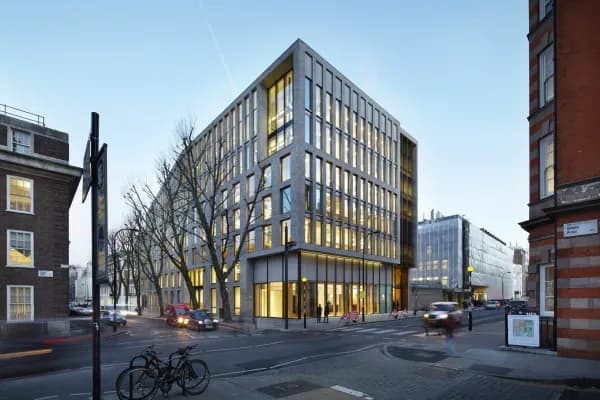
27. University of California, Berkeley – College of Environmental Design (Berkeley, USA)
Berkeley’s College of Environmental Design (CED) has a storied history of social and environmental activism. Today, that translates into studios where social justice and ecological design fuse. The architecture, landscape, and urban planning programs share a common commitment to “social and environmental values blended with innovative and critical teaching.” Students might design low-carbon housing for wildfire-prone communities or plan equitable green infrastructure for cities. CED is also strong in materials research: its labs explore innovations like low-carbon concrete and digitized construction waste reuse. The college benefits from Berkeley’s broader sustainability leadership (such as the Berkeley Center for Green Chemistry that often partners with design courses).
Key Focus Areas: Equitable and ecological urbanism, materials and design innovation, community-engaged design (especially in underserved communities).
Signature Studio / Lab / Output: Circular Construction Lab (Berkeley’s version) and Ecological Planning workshops – interdisciplinary studios that have developed real projects like urban farms in food deserts or retrofit strategies for aging suburbs. The Center for Resource Efficient Communities at Berkeley brings faculty from architecture, planning, and engineering together to inform California’s sustainability policies, giving students opportunities to work on live policy problems.
Recognition: UC Berkeley CED is consistently in the top echelons of global rankings. Its alumni include architects of the Living Building Challenge and leaders in public sector green programs.
What Tocco loves: "Designs with conscience and grit – Berkeley’s studios feel like movements, weaving activism into design so that greener futures are also fairer futures."
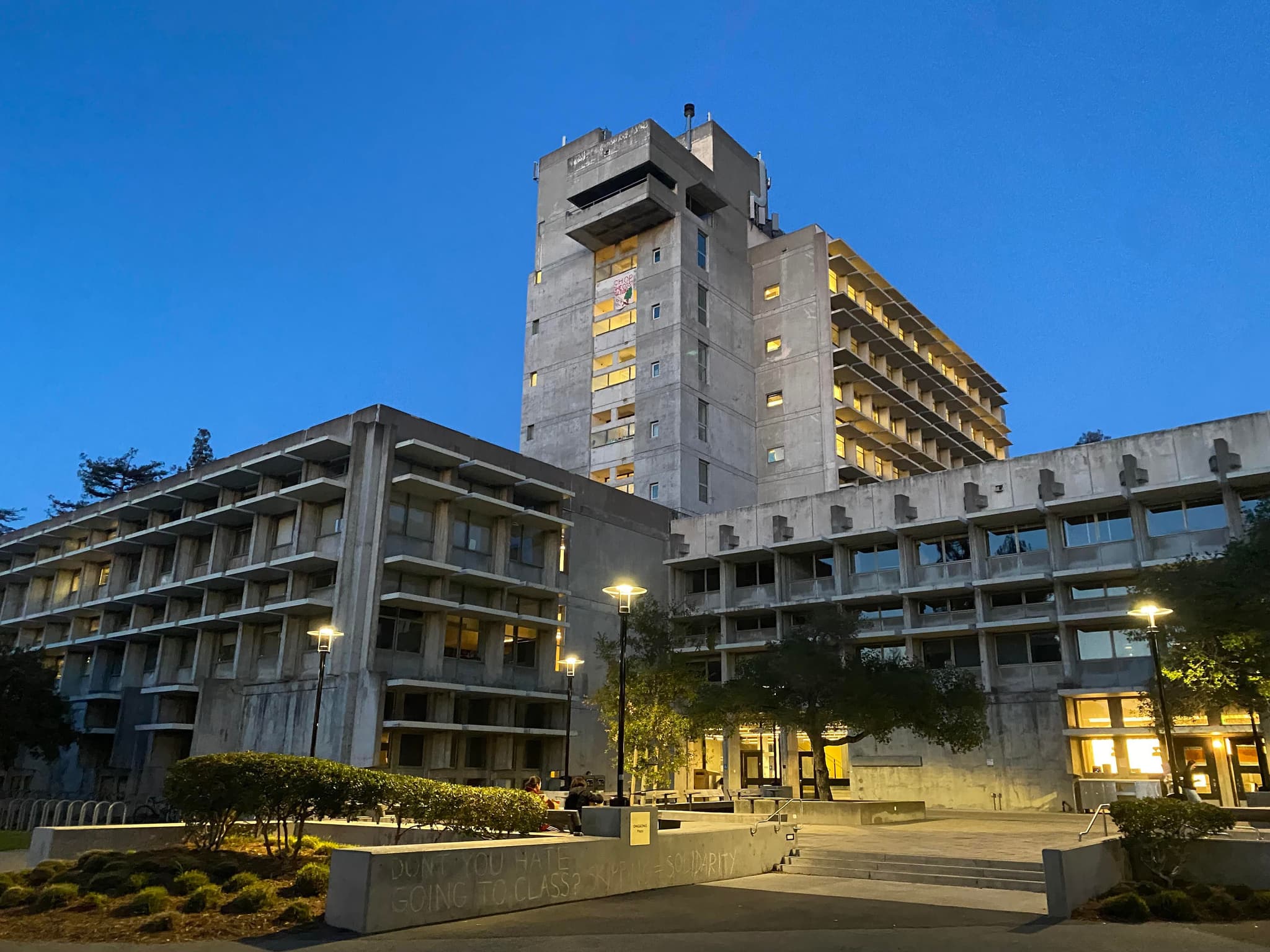
28. University of Melbourne – Melbourne School of Design (Melbourne, Australia)
The Melbourne School of Design (MSD) offers a holistic approach to the built environment, unique in Australia for housing architecture, landscape, urbanism, and construction under one roof. Sustainability is a unifying theme: the very MSD building is a 6-Star Green Star award-winning “living building,” used as a teaching tool (e.g., its structure and systems are exposed to students). In studios, Melbourne students tackle challenges like designing for extreme climates, integrating indigenous ecological knowledge, and cutting carbon in construction. The curriculum balances technical rigor with conceptual creativity. Recent course initiatives include a focus on decarbonizing construction and designing for biodiversity in cities.
Key Focus Areas: Sustainable architecture and urban design, climate adaptation (especially bushfire and heat resilience), regenerative design informed by indigenous perspectives.
Signature Studio / Lab / Output: BE–150 Studio series – studios dedicated to achieving net zero (or net positive) buildings by 2050, with outputs like prototypes for carbon-neutral school buildings in Melbourne. The Thermal Lab at MSD allows students to test facade systems and materials for energy performance in real conditions. Additionally, MSD’s FABLab supports digital fabrication research with recycled and bio-sourced materials.
Recognition: The University of Melbourne is top-ranked in Australia and well-regarded globally. The MSD building itself is famous in architecture circles for its sustainability and design.
What Tocco loves: "A green beacon down under – MSD’s own building shows its values, and its students emerge as versatile designers ready to heal both land and community.

29. University of Michigan – Taubman College of Architecture & Urban Planning (Ann Arbor, USA)
Taubman College places a strong emphasis on design as a tool for solving pressing environmental and societal problems, aligning with University of Michigan’s powerhouse research culture. The college encourages students to “decarbonize the built environment” and “expand housing access and affordability” through dynamic design and planning studios. In practice, architecture and planning studios at Taubman might work on climate-resilient waterfronts for Detroit or prototype affordable net-zero homes for Michigan’s communities. The school’s Climate Futures Initiative enables interdisciplinary studios explicitly focused on adaptation and mitigation strategies.
Key Focus Areas: Low-carbon and resilient architecture, sustainable urban planning and mobility, community-driven design with a focus on equity.
Signature Studio / Lab / Output: Systems Studio – a required arch studio where students must integrate structural, environmental, and building systems in a sustainable design. Taubman also partners with Michigan’s engineering and environment schools. A notable output: the “ArcPrep” program (Taubman’s collaboration with Detroit high schools) where students design small-scale interventions that have been implemented in communities.
Recognition: Taubman College is highly respected, particularly for sustainable urban design and the integration of research. It recently launched a “Climate Change” track and was lauded for timely creation of a Climate Futures platform to embed climate literacy across courses.
What Tocco loves: "Steers design education like the Big Three automakers never did – toward carbon-neutral, inclusive cities. Taubman’s motto could well be: form follows environment, and everyone’s invited to the table."
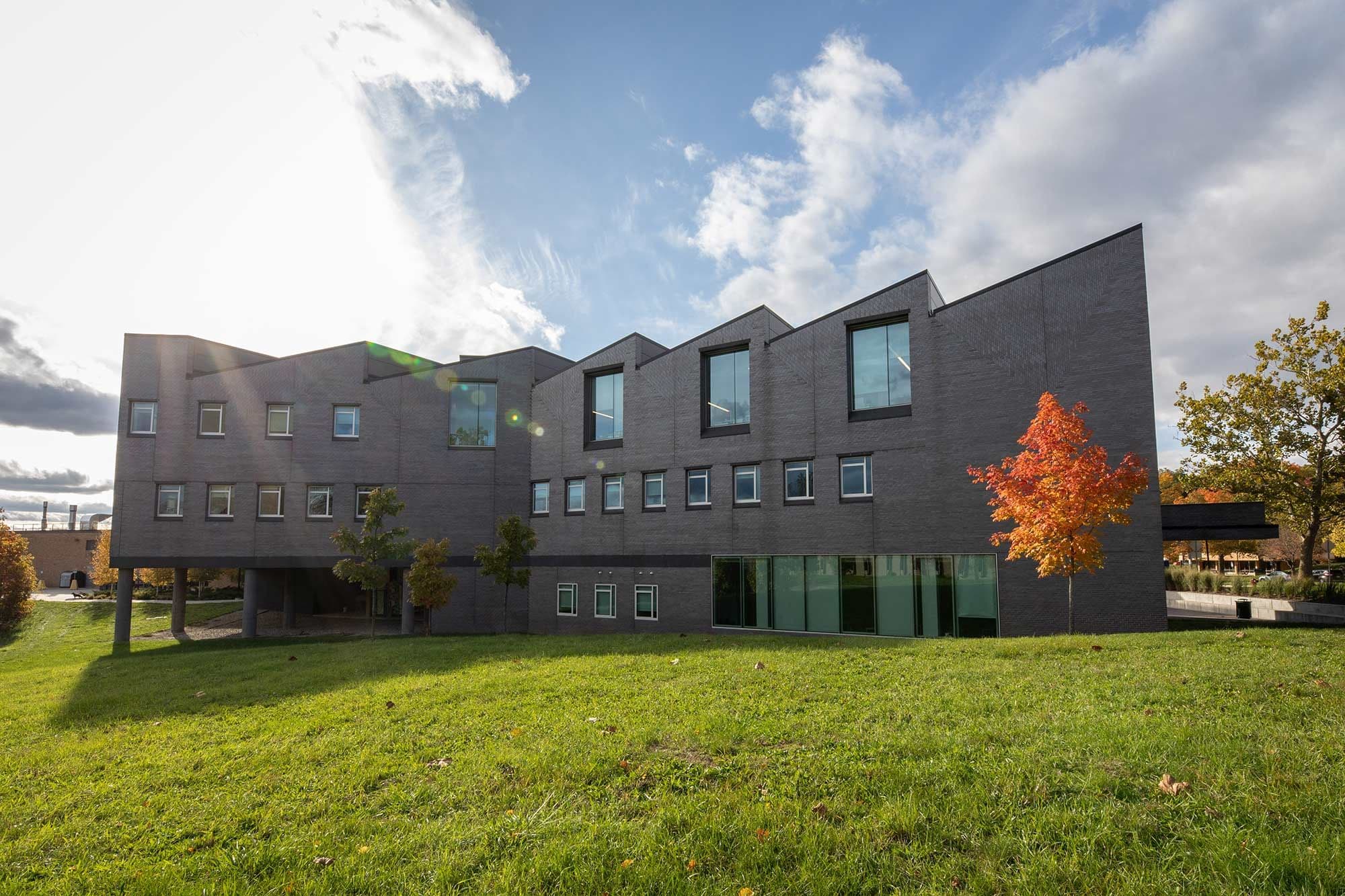
30. Umeå Institute of Design (UID) – (Umeå, Sweden)
UID, in northern Sweden, is a smaller school with a huge reputation in industrial and interaction design. Long celebrated for human-centered design excellence, UID now foregrounds life-centered design as well. "At UID, sustainability runs through all programs. We prepare students to become leading voices in initiating sustainable transformation." The curriculum has shifted from purely user-centric to consider ecosystems and “new materialities beyond existing forms of production and consumption.” Students from the product design, transportation, and interaction programs frequently collaborate on sustainable innovation projects—like circular consumer electronics, concepts for post-fossil mobility, or services that promote mindful consumption. The school’s remote locale also offers inspiration: the surrounding boreal forests and Umeå’s eco-city initiatives provide a living laboratory.
Key Focus Areas: Life-centered design, sustainable innovation in products and services, inclusivity and social sustainability in design.
Signature Studio / Lab / Output: Sustainability Project in MFA Product Design – a capstone where students partner with companies like IKEA or Volvo to tackle a sustainability brief. The UID Sustainability Committee also engages students in campus initiatives (like zero-waste prototyping workshops) and curates the annual Design Talks focused on sustainability.
Recognition: UID is consistently ranked among the world’s top industrial design schools due to its exceptional student outcomes. It stands out for its friendly size and collaborative culture.
What Tocco loves: "Proof that a small school can make a big impact – UID’s remote location belies its global influence, as it quietly produces designers who marry Swedish practicality with planet-centric vision."

